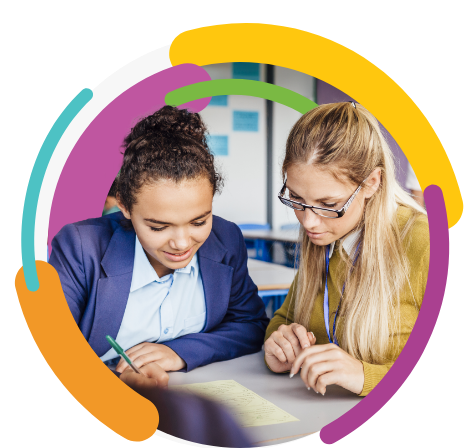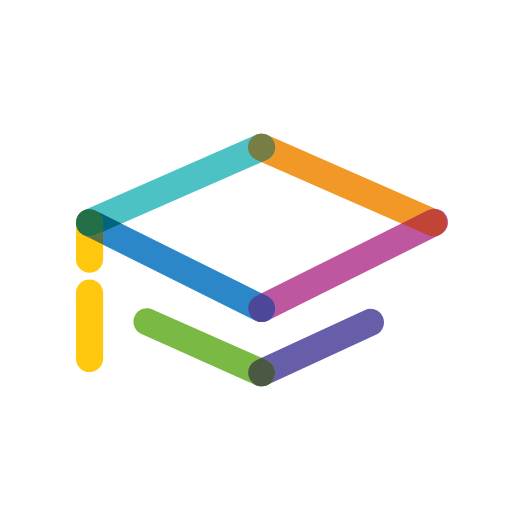
The advanced chatbot could be an essential time-saving tool for teachers, but some have concerns.
Since its release, ChatGPT has been making the rounds online and creating important discussions around AI and its impact on education. Launched in late 2022 by OpenAI, the AI tool, which stands for Chat Generative Pre-Trained Transformer, lets you type in questions and receive accurate, sometimes even creative responses. It’s an impressive innovation in modern technology that has the power to do everything from serve as a brainstorming buddy when you’re stuck writing something to answering complex math and science questions.
Though it’s only been around for less than a year, it has educators both embracing it and fearing it at the same time. Regardless of what your stance is on AI, it’s important to remember that technology is a neutral tool and not inherently good or bad. And one thing is certain—it’s destined to impact our culture and change schools across the globe as we learn more about what it’s fully capable of. So, how can educators learn to teach with or around it?
At FACTS Elevate 2023, we’ll offer two informative, can’t-miss sessions about how educators can work with ChatGPT. In the meantime, here’s how the AI tool is starting to appear in K-12 schools and how educators are responding.
Concerns around academic integrity
As soon as ChatGPT was released, educators world-wide panicked and made negative assumptions that it was an easy way for students to cheat on essays and exams. The second-largest school district in the U.S., Los Angeles Unified, immediately blocked access from its schools’ network to “protect academic honesty.” Other school districts quickly followed.
From Seattle to Alabama in the U.S. to New South Wales in Australia, school districts within the English-speaking world were beginning to ban the software. Other schools and universities warned students against using ChatGPT to cheat.
It’s easy to understand why educators feel threatened. This new powerful and accessible tool popped up with zero warning, leaving school leaders uninformed and unsure what to make of it. With so many things on teachers’ plates, the last thing they need to worry about are new ways their students can be academically lazy or dishonest.
But technology experts warn banning ChatGPT is not the way to go. Why? Because it simply won’t work, they say. Students often have access to laptops, cell phones, or other devices that allow them greater freedom on the internet than what they’re confined to on their school network.
With that in mind, some school leaders took a different approach. Instead of fearing the worst, they looked to the positive and found ways this new, exciting AI tool could enhance the education experience and even serve as a classroom aid.
ChatGPT shows it could actually make education better
Cherie Shields, an Oregon-based high school teacher, recently tasked her students in one of her classes to produce outlines for their essays. These compositions focused on drawing comparisons and contrasts between two 19th-century short stories, exploring themes related to gender and mental health.
After ChatGPT generated the outlines, the students stored their laptops and proceeded to handwrite their essays. Though it created the framework for the assignment, Shields believes utilizing the tool helped her students think deeper and more thoughtfully about the short stories they read.
But assisting students with their class assignments is just the tip of the iceberg. It can also help generate ideas for classroom activities, create solved examples of math problems, make flash cards, and write personalized lesson plans for students, amongst many other possibilities.
Dr. Monica Burns, EdTech and curriculum consultant and presenter on ChatGPT at FACTS Elevate 2023, has produced multiple articles and podcasts about AI in classrooms, which include loads of possible use cases. For example, she writes here about how a teacher could ask the tool to generate writing prompts.
One of the best wins with this advanced chatbot? It saves teachers valuable time. By using the tool to effectively automate routine tasks and amplify their pedagogy, it allows teachers to focus on what really matters. To get more out of it, Dr. Burns also writes about how educators can research helpful tips on using ChatGPT from other educators that have more experience with the tool.
Wondering how other AI tools can enhance the classroom and learning experience for students? From image generators to mind maps, there’s a handful of useful AI teaching tools in the market designed to empower educators and help them work smarter and more efficient.
Now that AI is here, there’s no going back. Instead of trying to ignore that it exists, let’s focus on ways we can leverage ChatGPT to improve teaching and learning, and prepare students for a future filled with powerful technology that has unlimited possibilities.


